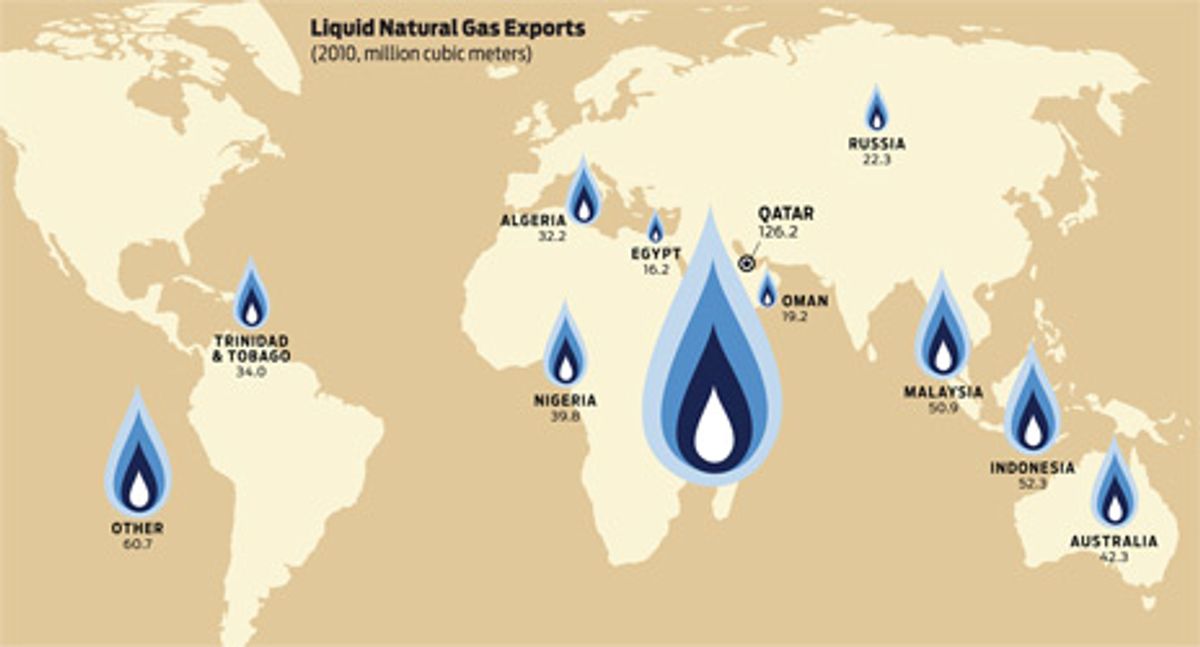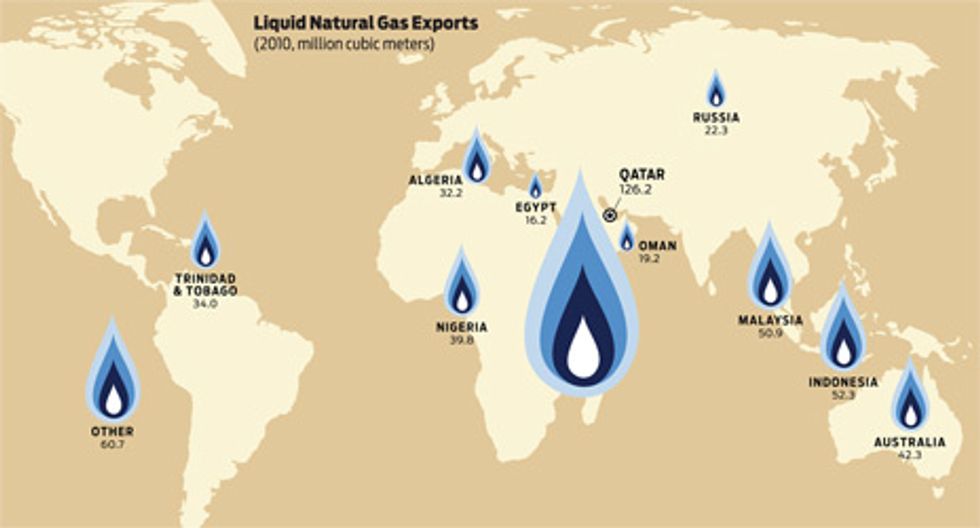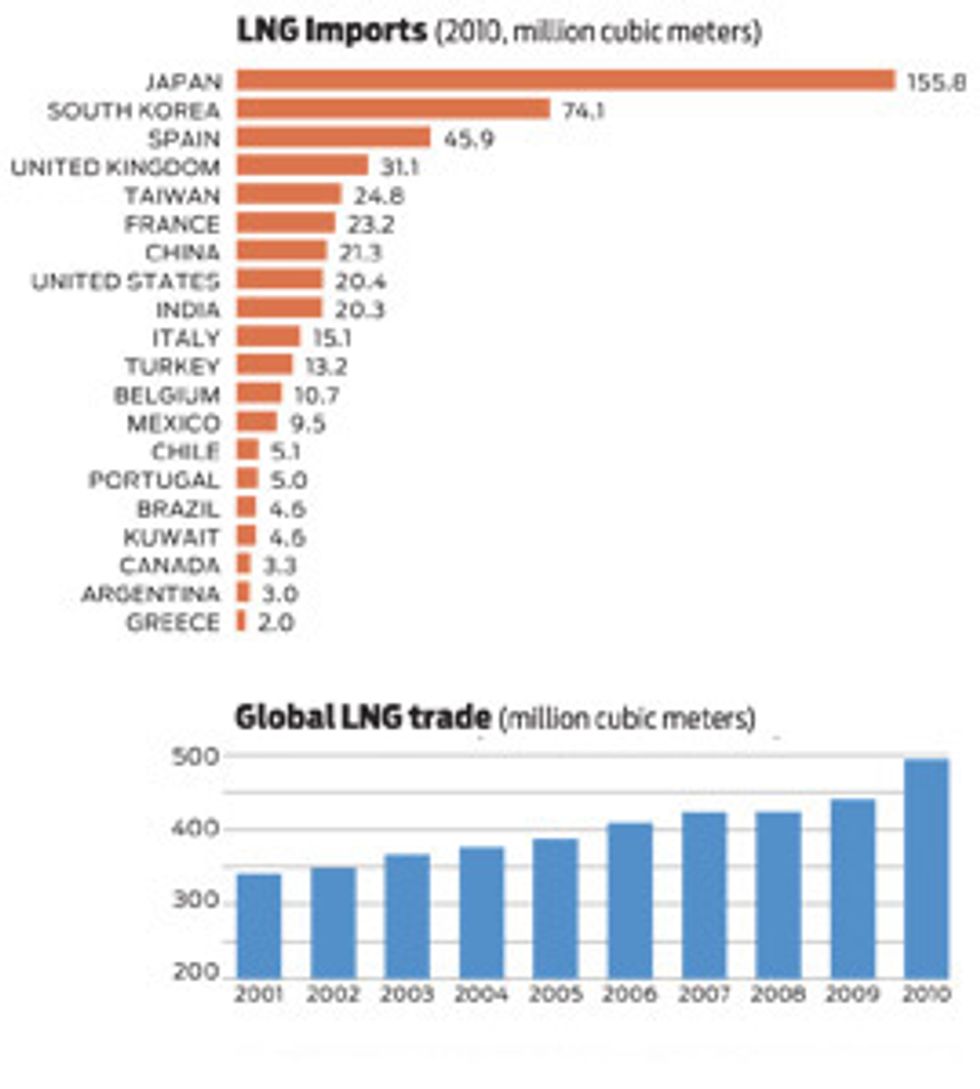Exporters have been shipping liquefied natural gas (LNG) since the first specialty carrier—the MV Methane Princess—was built in 1964.
But although LNG is twice as dense as compressed pipeline gas, the high costs of first cooling the gas to –162 °C to liquefy it for shipment and then regasifying it at the import terminal kept the market tiny for three decades.
Then, in the late 1980s and 1990s, a confluence of factors opened the market up: Gas-fired power plants became popular, owners of oil fields became more interested in the extra income natural gas offered, and the terms of LNG trade contracts shifted from cumbersome 20-year arrangements to short-term sales agreements.
Since 2001, the total volume of LNG shipped has doubled to reach 496 million cubic meters, the energy equivalent of about one and a half billion barrels of oil. Between 2009 and 2010 alone, world trade grew by 22.6 percent.
Qatar single-handedly exports about a quarter of the world’s LNG—all of which travels through the recently troubled Strait of Hormuz. The country harvests its supply from the South Pars/North Dome gas field, the largest in the world, which it co-owns with Iran.
On the receiving end, Japan is responsible for nearly a third of total imports. Gas-fired power has risen so sharply that it recently edged out oil-fired generation in terms of megawatts of electricity produced. Post-Kyoto and post-Fukushima, that trend will surely continue.
About the Author
Ritchie S. King, formerly dealt with numbers full-time as a chemical process engineer. Unlike most engineers, though, he enjoyed writing reports and making charts more than any other aspect of the job. In 2009, King decided to make writing about science and technology a full-time gig. He landed an internship at Spectrum last year and is currently a freelance journalist based in Brooklyn.


